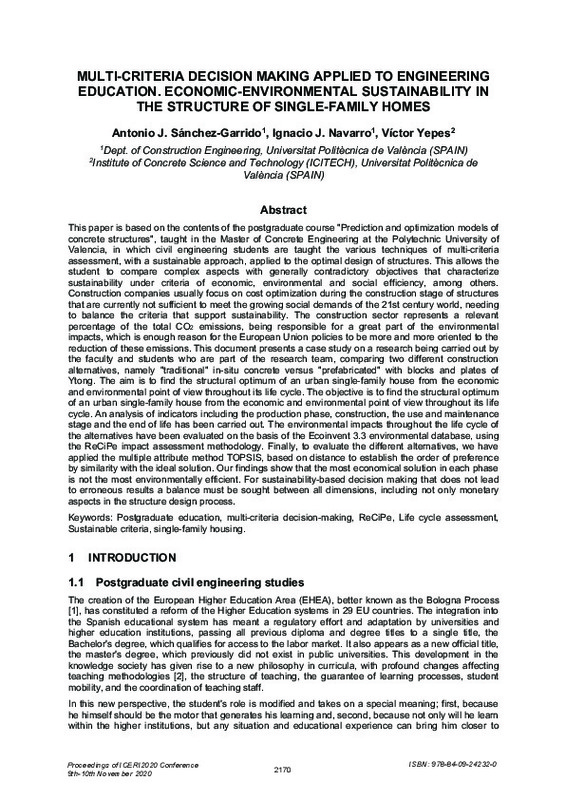JavaScript is disabled for your browser. Some features of this site may not work without it.
Buscar en RiuNet
Listar
Mi cuenta
Estadísticas
Ayuda RiuNet
Admin. UPV
Multi-criteria decision making applied to engineering education. Economic-environmental sustainability in the structure of single-family homes
Mostrar el registro completo del ítem
Sánchez-Garrido, AJ.; Navarro, IJ.; Yepes, V. (2020). Multi-criteria decision making applied to engineering education. Economic-environmental sustainability in the structure of single-family homes. IATED Academy. 2170-2180. https://doi.org/10.21125/iceri.2020.0521
Por favor, use este identificador para citar o enlazar este ítem: http://hdl.handle.net/10251/178565
Ficheros en el ítem
Metadatos del ítem
| Título: | Multi-criteria decision making applied to engineering education. Economic-environmental sustainability in the structure of single-family homes | |
| Autor: | Sánchez-Garrido, Antonio J. | |
| Entidad UPV: |
|
|
| Fecha difusión: |
|
|
| Resumen: |
[EN] This paper is based on the contents of the postgraduate course "Prediction and optimization models of concrete structures", taught in the Master of Concrete Engineering at the Polytechnic University of Valencia, in ...[+]
|
|
| Palabras clave: |
|
|
| Derechos de uso: | Reserva de todos los derechos | |
| ISBN: |
|
|
| Fuente: |
|
|
| DOI: |
|
|
| Editorial: |
|
|
| Versión del editor: | https://doi.org/10.21125/iceri.2020.0521 | |
| Título del congreso: |
|
|
| Lugar del congreso: |
|
|
| Fecha congreso: |
|
|
| Código del Proyecto: |
|
|
| Agradecimientos: |
|
|
| Tipo: |
|









